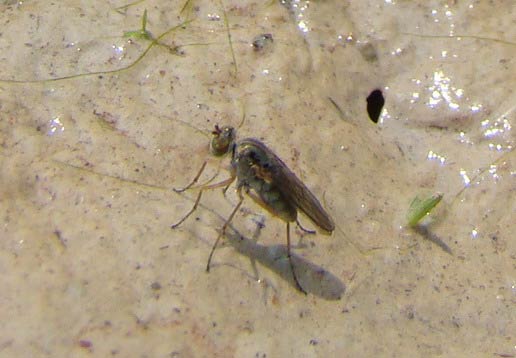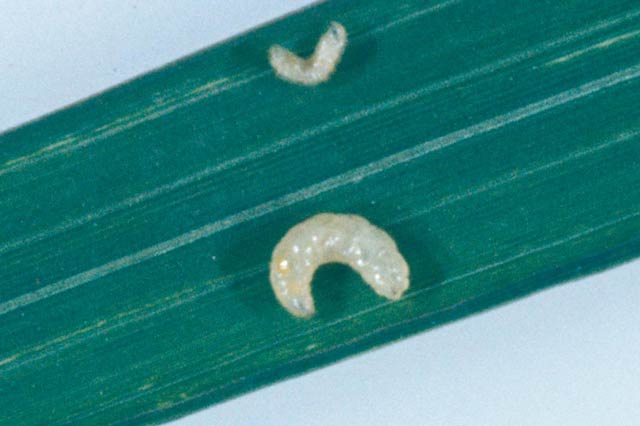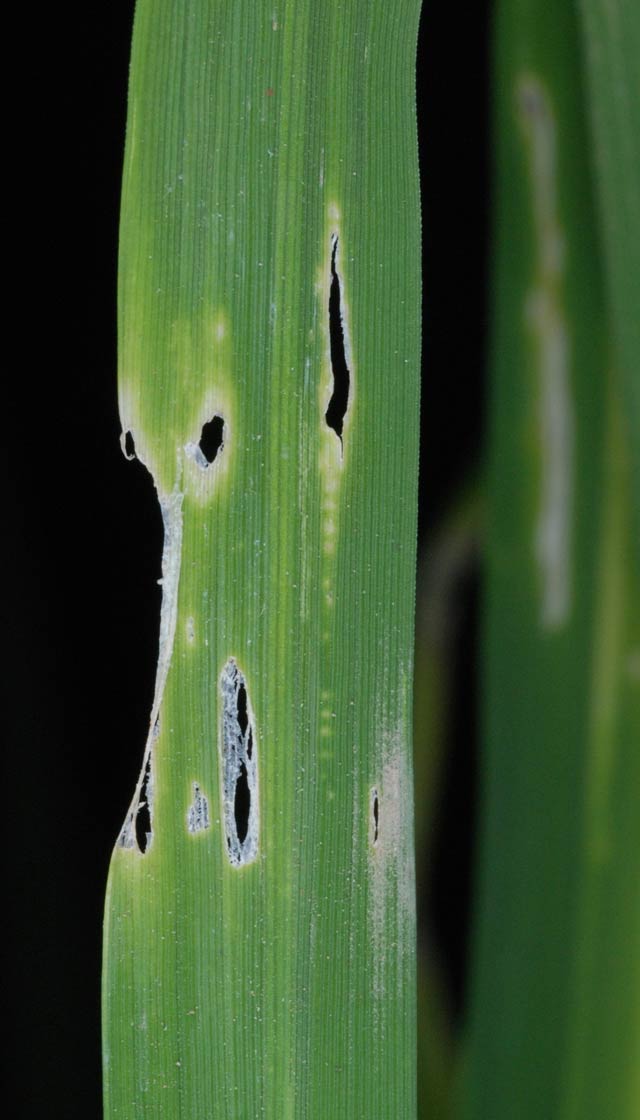Rice whorl maggot
 Hydrellia philippina Ferino
Hydrellia philippina Ferino
What it does
The feeding damage of whorl maggots causes yellow spots, white or transparent patches, and pinholes.
The larva uses its hardened mouth hooks to rasp the tissues of unopened leaves or the growing points of the developing leaves. The damage becomes visible when the leaves grow old. Mature larva prefers to feed on the developing leaves of the new developing tillers at the base of the rice plant.
Why and where it occurs
 Standing water in paddies during the vegetative stage, presence of host plants year-round, and transplanting of young seedlings favor the development of rice whorl maggot.
Standing water in paddies during the vegetative stage, presence of host plants year-round, and transplanting of young seedlings favor the development of rice whorl maggot.
The rice whorl maggot is semi-aquatic. It is common in irrigated fields and feeds on the central whorl leaf of the vegetative stage of the rice plant. It does not occur in upland rice. It also prefers ponds, streams and lakes or places with abundant calm water and lush vegetation.
The insect does not prefer direct-seeded fields and seedbeds. The adult is active during the day and rests on rice leaves near the water. It floats on the water or perches on floating vegetation. At midday, it is sedentary or it clings on upright vegetation. It prefers thick vegetation and is attracted to open standing water around seedbeds. Neonate maggots feed on the unopened central leaves where larval development is completed in 10−12 days. The full-grown maggots pupate outside the feeding stalk.
How to identify

Check the plant for the following symptoms:
- white or transparent patches
- pinholes
- damaged leaves easily break from the wind
- somewhat distorted leaves
- clear or yellow spots on inner margins of emerging leaves
- stunting
- few tillers
Check for the presence of insects:
- elongate, white eggs glued on leaves
- transparent to light cream legless young larvae rasping the tissues of unopened leaves
- yellow mature larva feeding on developing leaves of the new developing tillers at the base of the rice plant
Why is it important
The rice whorl maggot begins to infest the rice plant at transplanting. It locates rice fields by reflected sunlight from the water surface.
Using insecticides is not recommended for the rice whorl maggot control because the rice plant can compensate for the damage.
How to manage
There is no cultural control for rice whorl maggot.
Small wasps parasitized the eggs and the maggots. Dolicopodid flies prey on the eggs and ephydrid flies and spiders feed on the adults.
The rice plant can compensate for the damage caused by the rice whorl maggot. Usually, the symptoms disappear during the maximum tillering stage of the crop.







